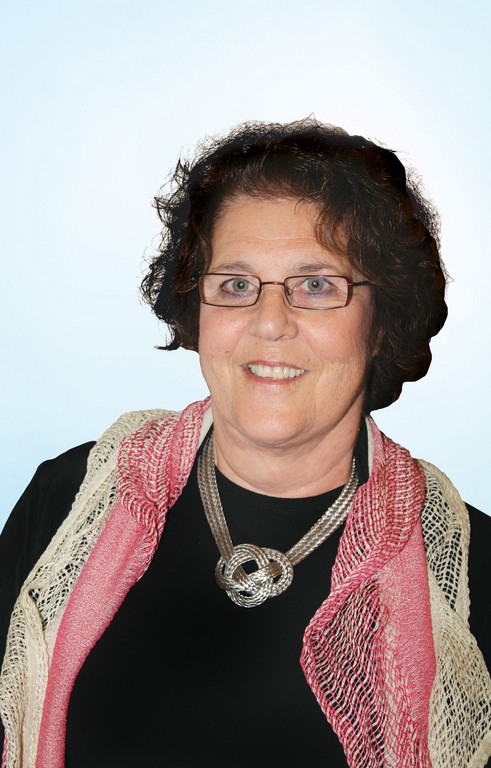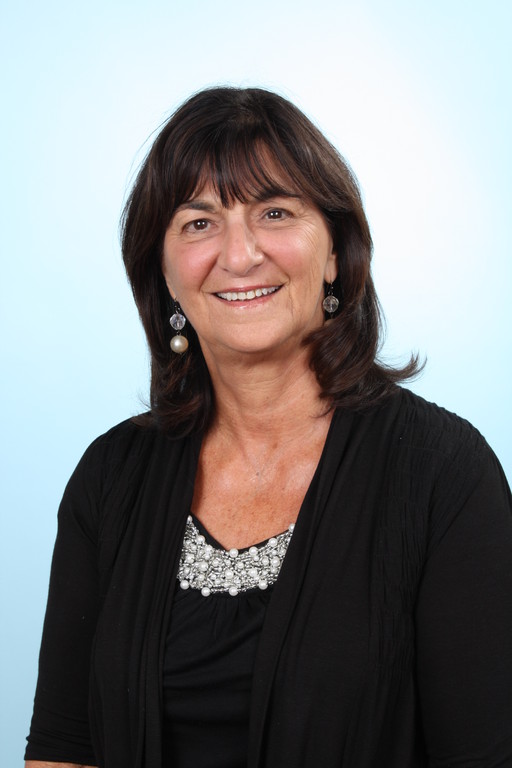Eating disorders spike in Jewish community
In the last two years a center that assists in the education and treatment of eating disorders has seen a 500% jump in patients who identify as Jewish and an increase of 156% in midlife clients.
In a recent seminar held in New York City, 75 clergy, educators, social workers, psychologists and psychiatrists listened to presentations sponsored by The Renfrew Center discussing women’s body image issues and eating disorders in the Jewish community.
The two presenters were Adrienne Ressler, LMSW, CEDS, the National Training Director for The Renfrew Center Foundation and an eating disorder and body image specialist, and Marjorie C. Feinson, PhD, a consultant for The Renfrew Center Foundation and a university professor and researcher for the last 30 years. She presents seminars on eating related issues focusing on Jewish women and their families.
“People were aware of eating disorders since the Middle Ages,” Ms. Ressler pointed out. “It’s throughout history, but not in the numbers we have today.” She noted a book “Holy Anorexia” by Rudolph Bell that describes people as “wasting away,” who starved themselves in the name of “holiness.”
The mid 1960s introduced “body image dissatisfaction” and the quest for “’perfection’ with the quest never reached,” said Ressler. She pointed out the influence of the underweight model Twiggy, feminism and the “pressure for women to be more male, achieving, focused. Enough is never enough; there is no end. They can never say that they achieved what they set out to do; the bar is always being set higher.”
The meeting in New York included a kosher dairy breakfast. “We encourage people to eat to get pleasure and have their appetites fulfilled, “ said Ressler. “Food is symbolic of what is happening with the client. They do not express their preferences for food and what satisfies them in life. Her position in life is she needs no relationships, no intimacy, no needs—‘I need nothing.’ We look at the way the client deals with food as the way she deals with life and the world. It’s consistent.”
Another factor is self-identification, body dissatisfaction and “negative self talk,” she continued. When they say to themselves, “’I’m a fat cow, I’m disgusting, I’m ugly’ it’s very damaging. They lose the power to shock, it’s punishing and mean to the self and becomes automatic behavior and, as a result, becomes part of their identity. They believe it. They are feeding their brain and thoughts negativity and it influences how they perceive themselves.”
An important influence on women is the mother-daughter relationship, “one of the most important relationships that exits,” said Ressler. Mothers should have a positive role model relationship; a negative one is fostered when mothers “despise their own bodies or espouse perfectionism and expect their daughters to be perfect.” Eating disorders affect all members of the family, from siblings to grandparents. She noted that, “communication has to be authentic in the family, from heart to heart. Girls, children, growing up need to be acknowledged for who they are rather than how they look and need to be encouraged to follow their interests and passions; they need to be full of what they are and who they are fosters self confidence” so they are “not hungering to feel whole.” Ressler said that a person with an eating disorder is indicating that “something is not right in my life…and not having a voice is expressed through an eating disorder.”
At the same time, she noted, it is not an issue of blame. “Something has gone awry,” stressed Ressler. “It’s a mental illness, it may be genetic, biological, genetic anxiety, difficulty with communication, with nurturing, or family secrets.” She noted the behavior could be set off by incidents at school, bullying, trauma, a perfectionist attitude. “It’s not a sense (as parents) of ‘what did I do wrong?’”
In addition, she pointed out, “the environment is not easy to navigate with its emphasis on the external influence of the body. There is tremendous competition and envy in women, children and families, always wanting to be the best, the most accomplished.”
It is important to realize, she said, that only “one percent of the world’s population is genetically predisposed to be really tall, thin and busty—and they are Scandinavians. Most others are surgically enhanced.” She also said that Dove soap has a curriculum for mothers, Israel is now restricting models to a BMI of 18.5 or above and Vogue magazine won’t hire anyone with an eating disorder.
Part of the program at Renfrew to help women feel empowered is to have them write letters. “We teach them to decode the media,” explained Ressler. “’What is the ad saying? They want you to feel bad about your body so you will buy the product. Use your voice.’ It gives them a stronger sense of self.”
She also noted the “wonderful, positive rituals in Judaism” juxtaposed with the restrictive rituals of eating only a percentage of food, or meticulously cutting food into pieces characteristic of an eating disorder. Those who have eating disorders fear their weight, fear being unable to get married, to be attractive and the centrality of food. She stressed the importance of identifying the problem as early as possible, noticing weight loss, as well as food obsessions, bad body talk, isolation, ceasing to engage in activities they once participated in, preparing food for others, binging on food, bathroom activities immediately after eating (bulimia, purging), excessive exercise, lowered feelings of self-worth, and turning down invitations because they are having a “bad body day, surrendering to the depression or anxiety of the eating disorder rather than simply the drama of adolescence.”
Eating disorders are not just a teen or women’s disease, although most studies are of young women. Among the general population of adult non-Jewish women, 12-17% have eating disordered behavior, said Dr. Marjorie Feinson. Feinson is conducting an ongoing study in Israel, begun in 2001 and funded by Hadassah, surveying women between the ages of 21 through 80 for eating disordered behavior. Her findings to date across the board regardless of Jewish orientation, from secular through charedi, is that 15% of Jewish female adults exhibit eating disordered behavior. Feinson thought that the charedim would have a higher incidence of eating disorders because of the dominance of food and its centrality in the charedi community, with rituals, celebrations and holidays, very large families, the traditional roll of women and their insulated and isolated group. But she said that it was “not true, we found that it was exactly the same.” In one case, a charedi woman’s eating disorder was triggered by her baking challah, a weekly event in large proportions for her 13 children. After much suffering by the mother, a married daughter insisted on taking over the baking, freeing her mother from the trigger of her disease.
The statistics of the Renfrew Center indicate that about 90% of anorexics and bulimics are female, and10-20% are male. “More women are coming forward now because it’s a mix of some for the first time or they had it for over 15 years and are now in midlife and are caretakers and raising kids,” stressed Ressler. “For some, the physical and emotional effects of the eating disorder have come to a head, maybe pressure, triggered by a birthday, divorce, a death, relocation—so hard on women, giving up their support system. It could also be a chronic illness, or revived in mid life. They may have unresolved losses for what might have been which tends to hit people at midlife, and they are grieving. The average age of onset is 15 but if it is chronic they have suffered on average 22 years. At this point, if the medical problems are chronic, there may be irreversible changes.” Between 2001 and 2003 they saw a jump in patients between ages 35 and 65 from 10% to 26%. Between 2009-2010, The Renfrew Centers saw a 513 percent increase in the number of Jewish patients. This is not specific to Orthodox Jews, but rather anyone who declared their religion as Jewish.
In midlife, women in our culture think ‘when can I do something for myself?’ emphasized Ressler. “They are labeled disloyal, aggressive or selfish. And in our society older women are devalued so being in midlife and Jewish are risk factors. Renfrew has a program for Orthodox Jews and offers various forms of treatment including psychodrama, art therapy, group and individual therapy, nutrition therapy, mealtime support. Full recovery is possible. Eating disorders are very complex and treatment is a process that can take several months or several years. The sooner eating disorders are diagnosed and treated, the more likely treatment will lead to sustained recovery.
“We are noting similar findings.,” said Dr. Michael Salamon, Senior Psychologist/Director, ADC Psychological Services in Hewlett. “There has been a definite increase in awareness of eating disorders and referral for treatment. As I noted in my book The Shidduch Crisis: Causes and Cures, the pressure to fit a specific physical size and shape may be a significant factor in this increasing rate.”
“There is a hopefulness,” said Ressler. “Often if they come in to treatment they are motivated, ‘maybe it’s my last chance for recovery.’ They may respond to treatment more quickly. They become leaders in the patient group and find their voice.”

 47.0°,
Mostly Cloudy
47.0°,
Mostly Cloudy 







